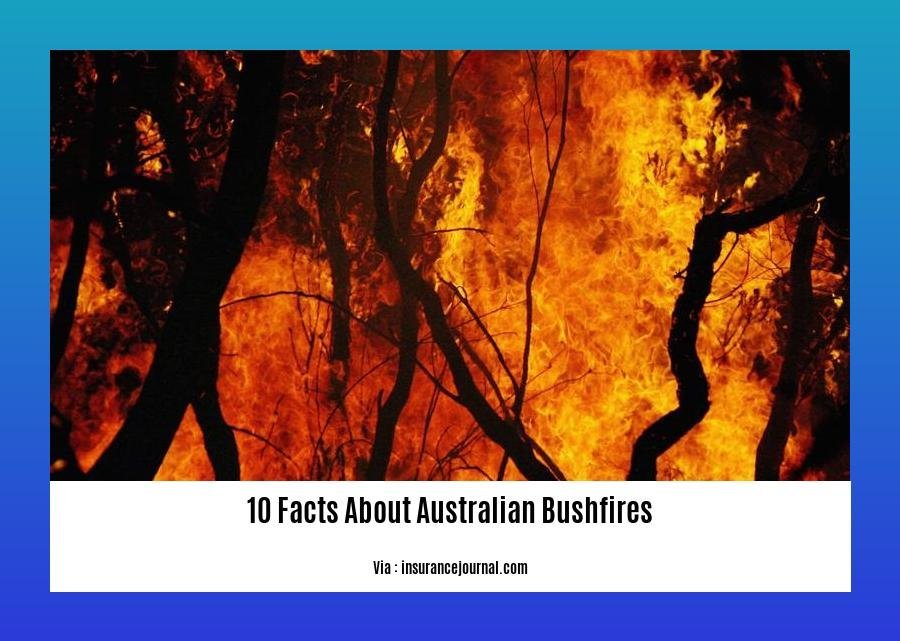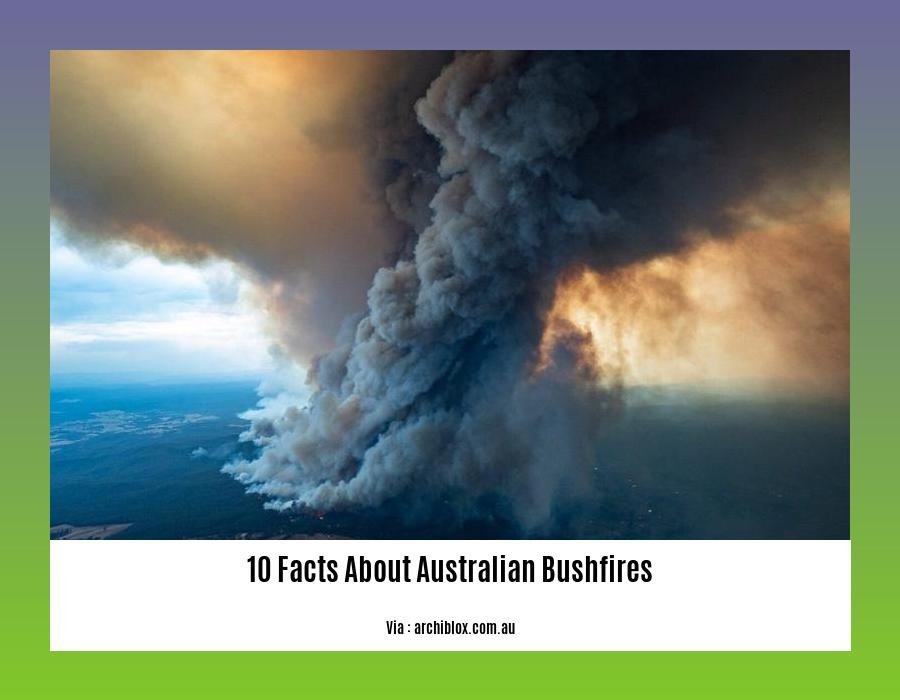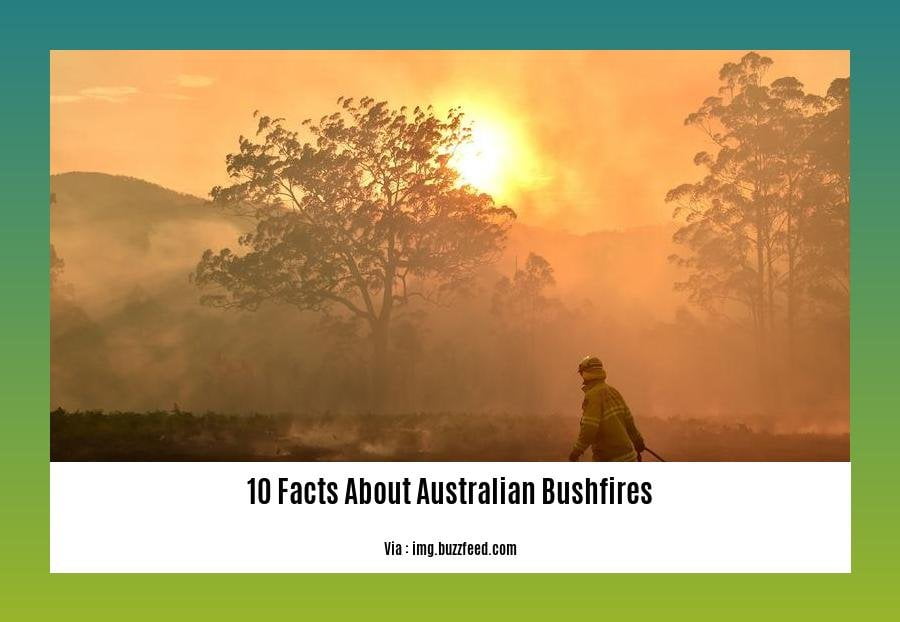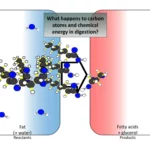In the heart of Australia’s untamed wilderness, where beauty and danger intertwine, a fiery menace lurks, threatening to unleash destruction upon the land and its inhabitants. Unveiling the Devastation: 10 Facts About Australian Bushfires unveils the sobering reality of this natural catastrophe, painting a vivid picture of its causes, consequences, and the indomitable spirit of those who rise from the ashes.
Key Takeaways:
150 firefighters from the United States traveled to Australia to assist with the fires.
The fires burned an estimated 19 million hectares of land, largely made up of forest and woodland.
Wildlife was severely impacted, with an estimate of 1 billion animals killed.
Smoke and air pollution from the fires led to an increase in respiratory illness in humans.
A combination of prolonged drought, high temperatures, and strong winds contributed to causing the fires.
10 Facts About Australian Bushfires

Australia, a land brimming with rich biodiversity and breathtaking landscapes, has a history marked by the devastation of bushfires. The catastrophe of the 2019-2020 bushfires unveiled the urgent need to comprehend and address the profound impact of these wildfires.
Let’s explore 10 crucial facts about Australian bushfires, shedding light on their causes, consequences, and potential solutions:
1. Fuel for the Flames: Prolonged Drought and Extreme Heat
Australia’s prolonged droughts, coupled with soaring temperatures, create the perfect conditions for bushfires. Dry vegetation, parched landscapes, and tinder-dry forests become fuel for the raging infernos.
2. Firestorms of Climate Change
Climate change amplifies the intensity and frequency of bushfires. Rising global temperatures exacerbate drought conditions, turning Australia’s bushland into a tinderbox ready to ignite.
3. Unfathomable Scale of Destruction: 19 Million Hectares Lost
The 2019-2020 bushfires were unprecedented in scale, scorching an estimated 19 million hectares of land. This staggering loss left an indelible mark on Australia’s natural heritage. Approximately 12.6 million hectares of forests and woodlands, brimming with diverse ecosystems, were reduced to ashes.
4. A Heartbreaking Toll on Wildlife: 1 Billion Animals Lost
The catastrophic fires claimed the lives of an estimated 1 billion native animals, including iconic species like koalas and kangaroos. This tragic loss highlights the devastating impact of bushfires on Australia’s unique biodiversity.
5. The Invisible Threat: Air Pollution and Public Health
Smoke and air pollution from bushfires pose significant health risks. Fine particulate matter, released into the atmosphere, can cause respiratory problems, particularly in vulnerable populations like children, the elderly, and those with pre-existing conditions.
6. A Global Response: International Firefighting Assistance
The magnitude of the 2019-2020 bushfires garnered global attention and support. Firefighters from the United States, Canada, and New Zealand joined forces with their Australian counterparts to combat the blazes. Their dedication and expertise proved invaluable in containing the fires.
7. Acknowledging Indigenous Knowledge for Fire Management
Traditional fire management practices employed by Indigenous Australians for centuries are gaining recognition. Their holistic approach, involving controlled burning and cultural fire practices, offers valuable insights for sustainable land management and bushfire prevention.
8. Community Resilience: Rebuilding and Recovery
Bushfires leave behind a trail of devastation, not just to the environment but also to communities. The resilience and determination of affected communities are crucial for rebuilding efforts. Government support, community initiatives, and mental health services play a vital role in the long-term recovery process.
9. Investing in Prevention: Fuel Reduction and Hazard Reduction Burns
Fuel reduction and hazard reduction burns are proactive strategies to mitigate the severity of bushfires. Removing excess vegetation and managing fuel loads help create defensible spaces and reduce the risk of catastrophic wildfires.
10. Adapting to a Changing Climate: Bushfire Preparedness and Education
In a changing climate, bushfire preparedness and education become paramount. Community awareness, evacuation plans, and fire safety measures empower individuals and communities to respond effectively to bushfire threats.
By delving into these 10 facts about Australian bushfires, we gain a deeper understanding of the challenges and complexities of this devastating phenomenon. It is through collaboration, innovation, and a commitment to sustainable land management that we can strive to mitigate the risks and impacts of bushfires, safeguarding our communities, ecosystems, and the unique natural heritage of Australia.
Ever wondered why polar bears don’t freeze? Explore the wonders and mysteries of science with our fascinating collection of cool scientific facts. Immerse yourself in the captivating world of forensic science and uncover its intriguing secrets, from fascinating case studies to the latest technological advancements. Check out our comprehensive article on facts about forensic science.
Australia’s unique vegetation, dominated by highly flammable eucalyptus forests, contributes to the intensity and spread of bushfires.

Imagine a land where towering eucalyptus trees dance in the breeze, their leaves shimmering in the sunlight. These iconic giants have witnessed the ebb and flow of time, their existence intertwined with the destiny of this continent.
But beneath their beauty lies a hidden danger. Eucalypts, with their essential oils and volatile compounds, are highly flammable. When combined with the arid conditions that often plague Australia, they become fuel for a formidable foe: bushfires.
Eucalyptus: A Double-Edged Sword
On one hand, eucalypts are a vital part of Australia’s ecosystem. They provide habitat for a diverse array of wildlife, from koalas to parrots, and play a crucial role in the water cycle. Their deep root systems help stabilize the soil, preventing erosion.
On the other hand, their flammability poses a significant challenge. Eucalypts’ volatile oils, released into the air, create a canopy of fuel that can ignite easily. Once a fire starts, it spreads through the treetops, carried by strong winds and fueled by the dry undergrowth.
A Landscape Shaped by Fire
Bushfires have been a part of Australia’s landscape for millennia, shaping its ecology and evolution. Eucalypts have adapted to this fiery reality, developing mechanisms to survive and even thrive in these extreme conditions.
Their thick bark insulates the trunk, protecting it from the intense heat. Epicormic buds, located beneath the bark, allow the trees to regenerate after a fire, sprouting new leaves and branches.
The Role of Climate Change
In recent years, the frequency and intensity of bushfires have increased dramatically, largely due to climate change. Rising temperatures dry out the vegetation, making it more susceptible to ignition. Droughts, which are becoming more common, further exacerbate the situation.
Key Takeaways:
- Eucalyptus forests are highly flammable due to their essential oils and volatile compounds.
- Eucalypts have adapted to fire, with thick bark and epicormic buds that allow them to regenerate after a fire.
- Climate change is increasing the frequency and intensity of bushfires, making it harder for eucalypts and other vegetation to recover.
- Bushfires have a devastating impact on Australia’s environment, economy, and people.
Citations:
- The Conversation
- ScienceDirect
Climate change exacerbates bushfire conditions by increasing temperatures, reducing rainfall, and causing droughts, leading to drier vegetation and longer fire seasons.
Key Takeaways:
- Climate change is making Australian bushfires more frequent and severe.
- Hotter temperatures and drier conditions dry out vegetation, making it more flammable.
- The fire season is longer now than it used to be, and fires are burning more intensely.
- Bushfires are causing widespread damage and loss of life.
Hotter temperatures due to climate change are drying out vegetation, making it more likely to catch fire. When the vegetation is dry, it burns more easily and intensely, leading to more devastating bushfires.
Climate change is also reducing rainfall, particularly in southern and eastern Australia. This is leading to droughts, which further dry out the vegetation and make it more likely to burn.
The combination of hotter temperatures, reduced rainfall, and longer droughts is creating the perfect conditions for bushfires to start and spread. This is a major threat to Australia, and it is only going to get worse as the climate continues to change.
What can be done to address this issue?
- We need to reduce greenhouse gas emissions to mitigate climate change.
- We need to manage our forests and bushland more effectively to reduce the risk of bushfires.
- We need to prepare our communities for the impacts of bushfires, including providing better warnings and evacuation plans.
Citations:
- Climate Change Is Driving Worsening Bushfires in Australia
- How climate change increases bushfire risk – Curious
**The consequences extend beyond immediate destruction, as bushfires release greenhouse gasses, contribute to soil erosion, and disrupt ecosystems.**
The ramifications of Australian bushfires reach far beyond the immediate devastation. These catastrophic events leave a trail of environmental consequences that can reverberate for years to come. Let’s explore the ways bushfires impact our planet’s delicate balance:
Greenhouse Gas Emissions: The Invisible Culprit
When Australia’s iconic landscapes fall prey to the fury of bushfires, they unleash a significant amount of greenhouse gases into the atmosphere. Carbon dioxide, a primary greenhouse gas, is released in copious amounts, contributing to global warming and its cascading effects. In fact, the 2019-2020 bushfires in Australia alone emitted almost half of the country’s annual emissions, a grim testament to the scale of the problem.
Soil Erosion: A Silent Devastation
A hidden yet devastating consequence of bushfires is the severe soil erosion they trigger. As vegetation, the natural protector of soil, is incinerated, the land becomes vulnerable to the ravages of wind and water erosion. Topsoil, the fertile layer crucial for plant growth, is swept away, leaving behind barren and unproductive land. This loss of soil fertility can have long-term implications for agriculture and ecosystems.
Ecosystem Disruption: A Loss of Biodiversity
Bushfires can shatter the delicate balance of ecosystems, leading to the loss of biodiversity. The destruction of vegetation and animal habitats disrupts food chains and ecological interactions, causing a ripple effect throughout the ecosystem. Native animals, already facing numerous threats, are particularly vulnerable to the devastating impact of bushfires. Tragically, the 2019-2020 bushfires are estimated to have claimed the lives of over 1 billion native animals, including iconic species like koalas and kangaroos.
Key Takeaways:
- Bushfires emit substantial amounts of greenhouse gases, particularly carbon dioxide, contributing to global warming.
- Soil erosion, triggered by the loss of vegetation, leads to the degradation of land and reduced agricultural productivity.
- Ecosystems are severely disrupted as habitats are destroyed and biodiversity is lost, impacting numerous species, including iconic Australian animals.
Most Relevant URL Sources:
- UNEP – Ten impacts of the Australian bushfires
- The Guardian – Australia’s bushfires have emitted 250m tonnes of CO2, almost half of Australia’s annual emissions
FAQ
Q1: What factors contributed to the devastating Australian bushfires?
A1: The bushfires were caused by a combination of factors, including prolonged drought, high temperatures, and strong winds.
Q2: What was the extent of the damage caused by the bushfires?
A2: An estimated 19 million hectares were burned, with 12.6 million hectares primarily made up of forests and woodlands. The fires also resulted in the destruction of over 5,900 buildings, including over 2,800 homes.
Q3: What impact did the bushfires have on wildlife?
A3: The wildfires had a devastating impact on wildlife, with an estimated 1 billion animals killed. Many species, including koalas, kangaroos, and wallabies, were severely affected.
Q4: How did the bushfires affect human health?
A4: The fires had a significant impact on human health, with smoke and air pollution leading to increased rates of respiratory illness. Many communities were forced to evacuate, and some people lost their homes and livelihoods.
Q5: What is being done to prevent future bushfires?
A5: Governments and organizations are working to improve fire prevention and management strategies. This includes measures such as fuel reduction burns, community education, and the development of new fire-resistant building materials.
- China II Review: Delicious Food & Speedy Service - April 17, 2025
- Understand Virginia’s Flag: History & Debate - April 17, 2025
- Explore Long Island’s Map: Unique Regions & Insights - April 17, 2025
















